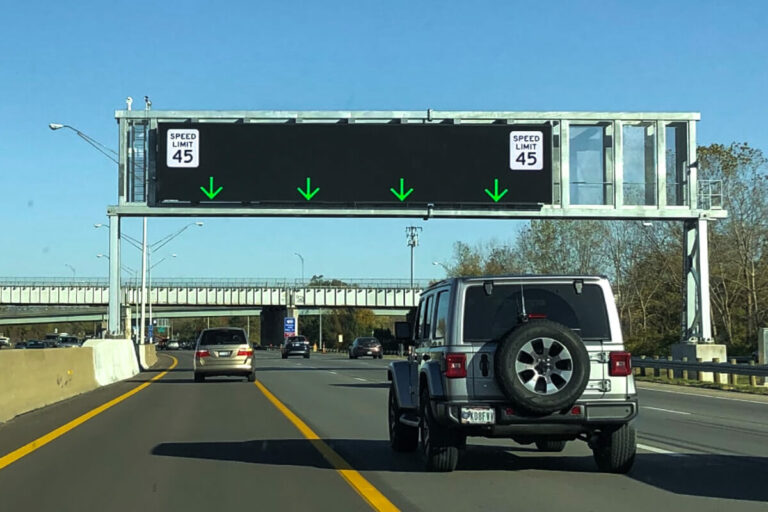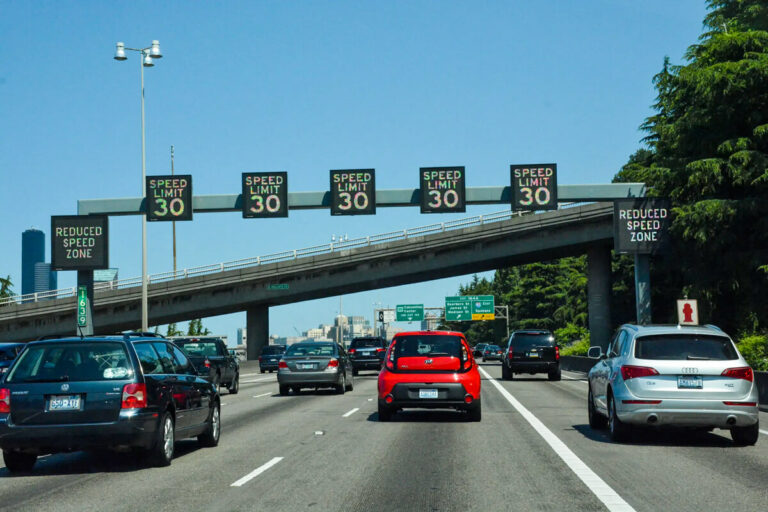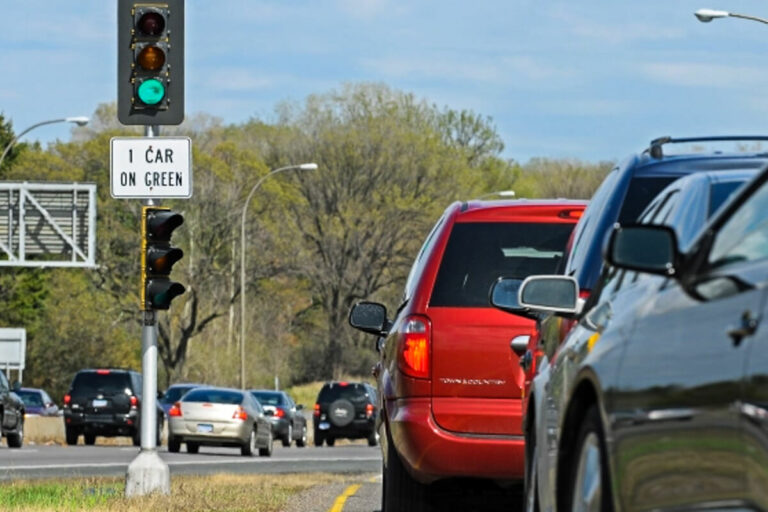Transportation Management and Operations (TSMO) Strategies
What is TSMO?
TSMO is a set of strategies to maximize the efficiency and safety of existing transportation systems. They are typically deployed as a set of flexible strategies that can be used throughout a corridor.
The 80/94 FlexRoad corridor is a developed area with limited right-of-way available for improvements without major impacts to businesses and homes in the area. These constraints are one of the reasons why innovative solutions are being identified.
Benefits include:
- Smoother and more reliable traffic flow
- Improved safety
- Less wasted fuel and cleaner air
- More efficient use of resources (funding and facilities)
TSMO Strategies Under Consideration
Hover or tap to learn more.

Dynamic shoulder lanes
Dynamic Shoulder Lanes
Dynamic shoulder lanes use the shoulder for additional capacity during peak congestion or in response to incidents.

Event management strategies
Event management strategies
Event management strategies reduce congestion by improving operational and maintenance practices – like incentivizing tow companies to remove disabled vehicles quickly and safely or increasing Hoosier Helper staff.

Improved signage
Improved signage
Improved signage increases driver knowledge and awareness of current traffic conditions, helping to reduce crashes and inform motorists.

Interchange improvements
Interchange improvements to the Broadway/I-65 interchange would reduce backups and increase capacity for drivers exiting to Broadway or I-65 SB.
Interchange improvements
Interchange improvements to the Broadway/I-65 interchange would reduce backups and increase capacity for drivers exiting to Broadway or I-65 SB.

Ramp metering
Ramp metering
Ramp metering controls the frequency of vehicles entering the roadway to match road capacity, leading to improved merging and reduced crash rates.
learn more

Variable speed limits
Variable speed limits
Variable speed limits adjust based on real-time traffic roadway incidents, work zones and weather conditions, helping to reduce congestion.
Learn More

Dynamic lane control
Dynamic lane control
Dynamic lane control closes or opens individual traffic lanes to provide advance warning of closures or incidents using signals above each lane.

Queue warning
Queue warning
Queue warning uses real-time displays of messages alerting drivers that slowdowns are ahead, reducing the potential for rear-end crashes or secondary incidents.
Learn More
Alternatives Being Studied
80/94 FlexRoad is analyzing four alternatives with a range of TSMO strategies to maximize the efficiency and safety of existing transportation systems.
The Project Team identified potential strategies after conducting interviews with operations, traffic and maintenance staff familiar with the 80/94 corridor. This helped to ensure regional issues, priorities and considerations were considered.








